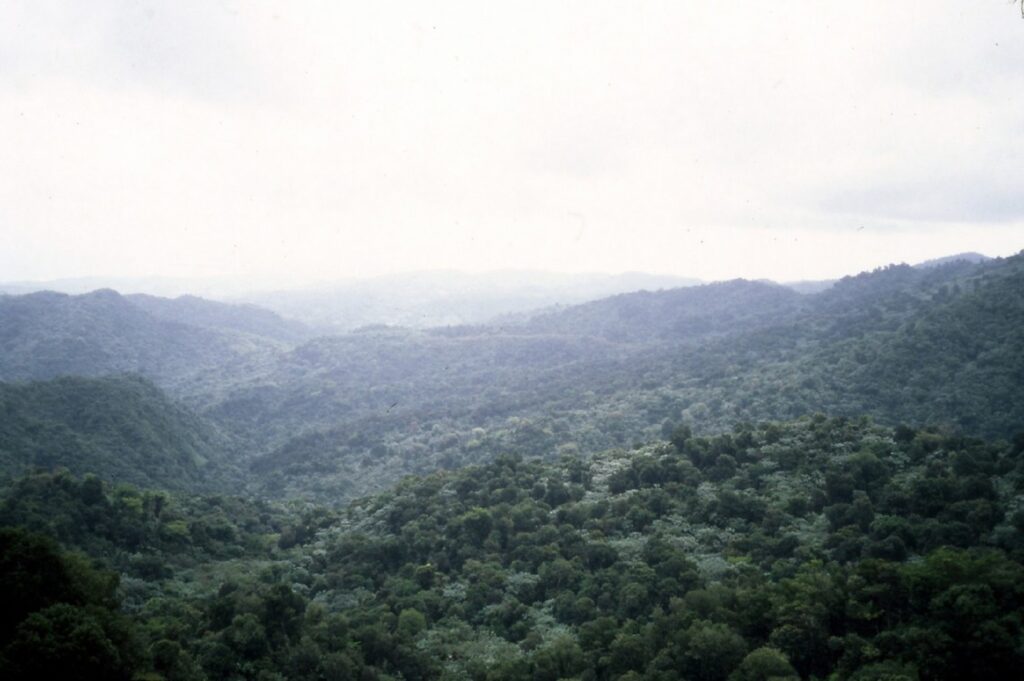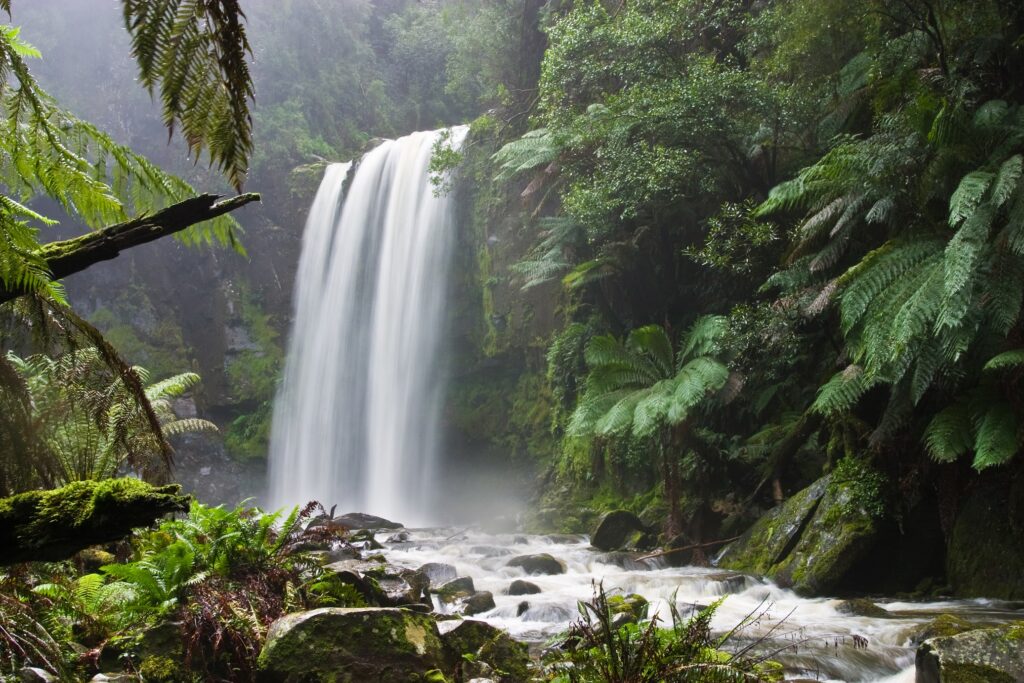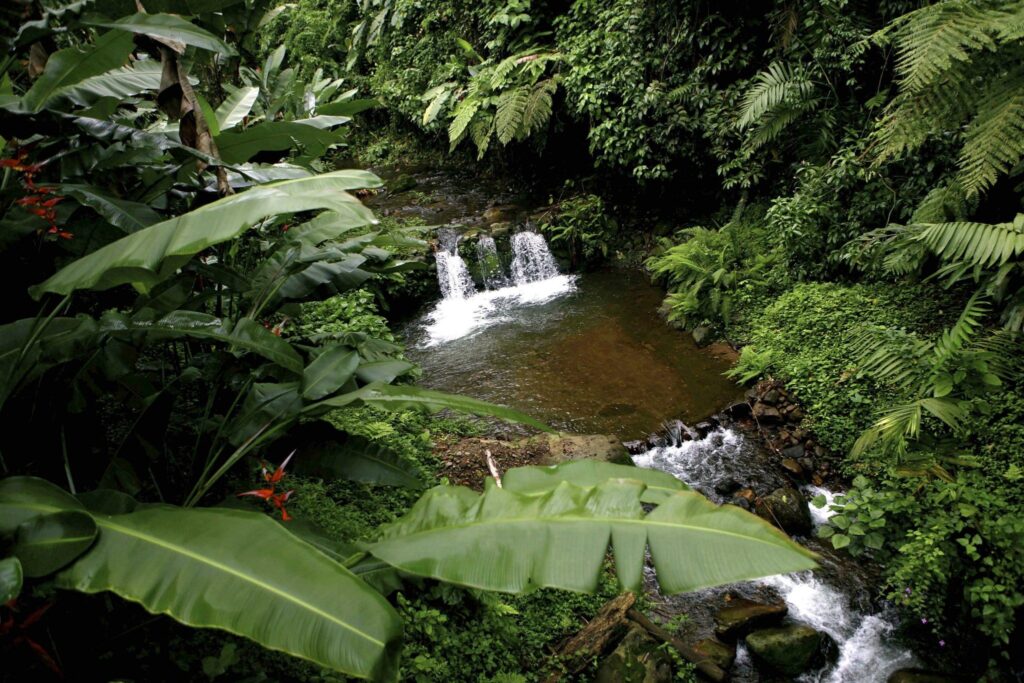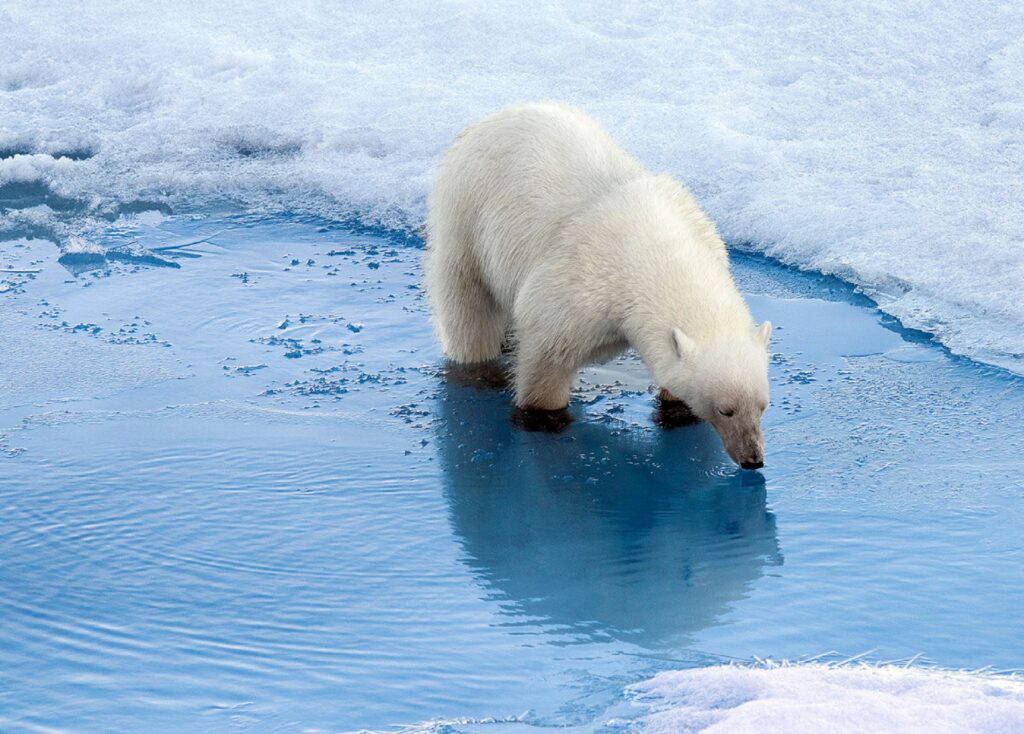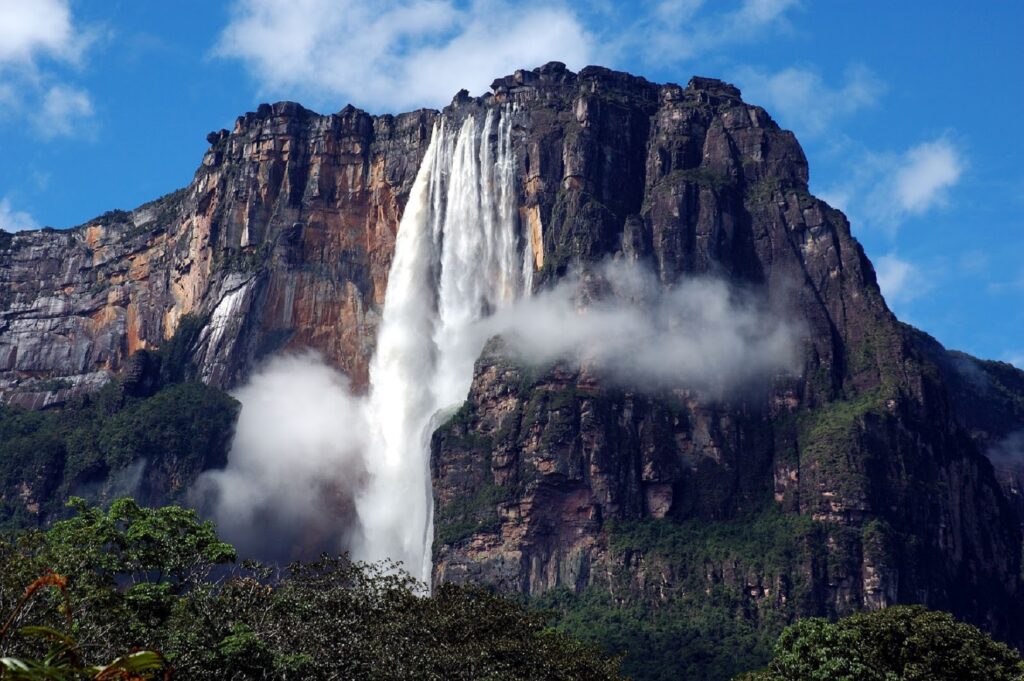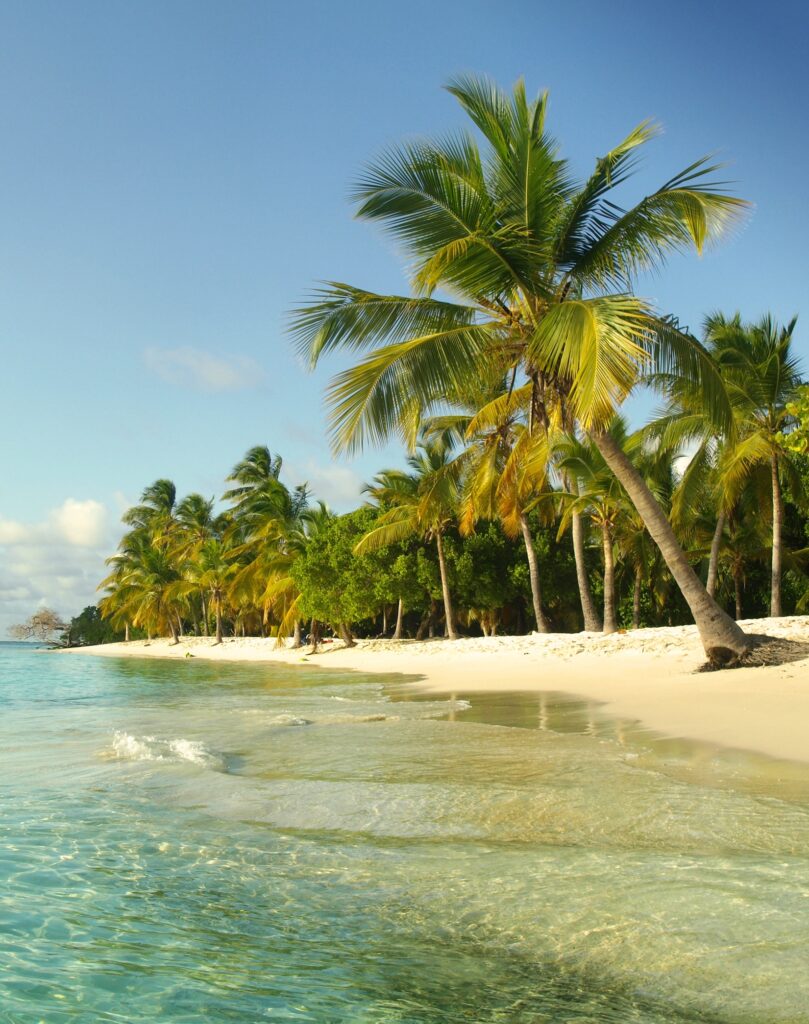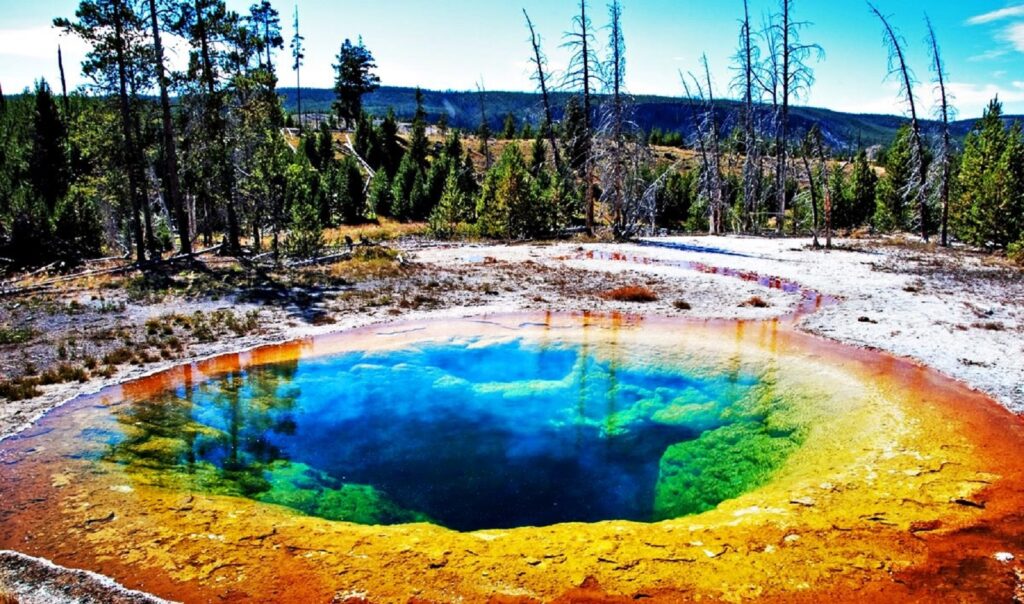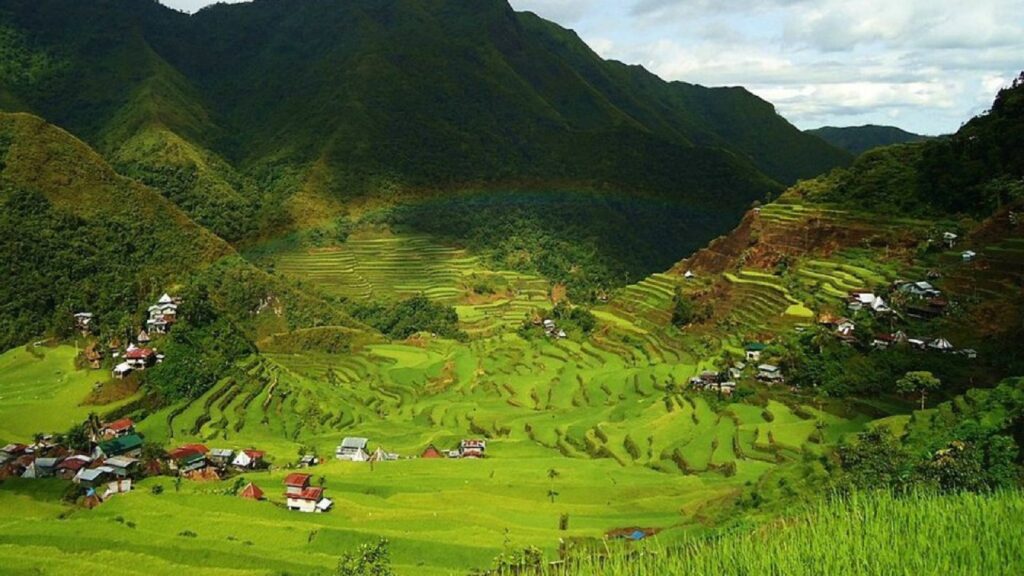The contrast of the Natural Environment is the Cultural Environment. The Natural Environment is made up of biotic and abiotic factors that are naturally interrelated. It differs from the Cultural Environment, in which man has transformed the natural environment to adapt it to his convenience. I invite you in this post to know and discover the Natural and Cultural Environment with the purpose of learning to love and care for it.
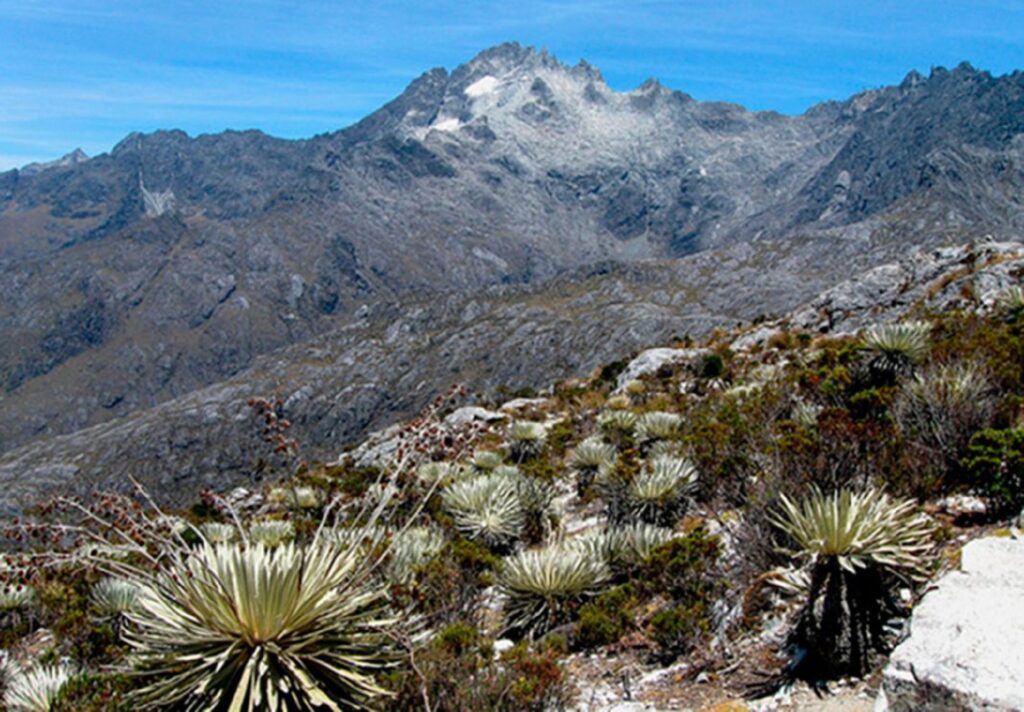
Natural and Cultural Environment
In the environment or Natural Environment, all living organisms, animals and plants, interrelate with minerals and climatic factors in a natural way without the intervention of man. When the anthropic component or human beings intervene even on a small scale, it is said to be a Cultural Environment, built or artificial.
The environment or Natural Environment comprises the interrelationships between the entire biotic component (all living species) and abiotic component (climate and natural resources) that impact the activities and survival of the anthropic component (human being) and its economic activity. In the Natural Environment it is possible to identify different components, namely:
- Natural ecosystems or ecological successions that function in equilibrium or climax, where plants, animals, microorganisms, and inorganic resources such as soil, water, minerals, atmosphere, and climatic factors with which they interact in space and time cohabit.
- Natural resources are abiotic factors or inorganic resources that are not restricted to space and time, such as climate, electrical, magnetic, radioactive energy that originate in nature.
Its antagonist is the Cultural Environment, built environment or artificial ecosystem. That is to say, the environment where humanity has adapted it for its benefit, changing the landscapes or Natural Environments transforming them into agricultural, forestry, human populations or other ecosystems where man intervenes. A Cultural Environment can be a small intervention such as the construction of a bahareque or mud house, the installation of a photovoltaic system, or any small alteration of the complex natural ecosystem in a simplified artificial ecosystem.
Although the different animal species take advantage of natural resources to build their shelters or homes where they take shelter from the weather or a natural enemy or provide better conditions at a time in their life cycle, since human beings do not intervene, it is considered part of the natural interaction of a Natural Environment, for this reason the dams that the beavers build and the mounds of the different types of insects are considered natural.
Humanity at all times lives in an altered environment, it is quite unusual for it to be found living in natural environments in its entirety. The naturalness of an ecosystem can vary from one extreme to another, that is, from 100% natural to 0% natural. In other words, when a diagnosis is made of the factors that converge in an ecosystem, it is observed that their level of naturalness is not uniform. Namely, in an agricultural ecosystem the mineralogical composition and chemical composition is similar to that of a natural forest soil, but differs in its physical structure.
The word Environment, habitat or ecosystem are synonyms that refer to the place where organisms live in nature, so when wanting to indicate the place where giraffes live, use the term savannah ecosystem or savannah habitat. According to the United Nations Environment Program (UNEP) the term Environment is more used to indicate the "natural" Environment, or the sum of the biotic and abiotic factors that surround an organism or group of organisms.
The Natural Environment is made up of non-living components such as water, soil, relief, air, climate and by biotic components or living organisms such as plants and animals. While the Cultural or Built Environment is made up of facilities, technological processes and works built by man.
Composition of the Natural Environment
According to specialists in earth sciences or geological sciences, the Natural Environment is made up of four spheres, these are: the lithosphere, the hydrosphere, the atmosphere and the biosphere. A group of these scientists point out that in addition to the above, they also include the cryosphere, referring to the ice, which differentiates it from the hydrosphere and also the pedosphere (soil) is an active sphere and is interrelated with the four spheres indicated.
geological activity
The lithosphere sphere is the earth's crust itself. It is the solid space outside the Earth, its chemical and mechanical structure is different from the underlying mantle. The lithosphere is where all living things develop and grow. The lithosphere, is the rock layer of the Earth, has been formed mainly by igneous processes that, when the magma cools, solidifies and transforms into solid rock.
At the bottom of the lithosphere is located a hot mantle resulting from the decomposition of radioactive compounds. Although its state is solid, it is in a state of rheological convection. This rheological convection is what impacts and causes the lithospheric plates to move slowly. Resulting in tectonic plates. Volcanoes form in this mantle as a result of the melting of subducted crustal material, which has been the rising mantle of mid-oceanic ridges and mantle plumes.
Water
Water on earth is found in different bodies of water, such as oceans, seas, rivers, ponds. The largest percentage of water 97% is saline and is found in the oceans and seas. The remaining 3% is fresh water, which is found in a solid state at the poles and in a liquid state in rivers, lakes, and ponds.
The oceans
The oceans are part of the sphere called the hydrosphere. It is a body of saline water that forms about 97% of the earth's surface, which has been an area of about 362 million square kilometers. The oceans are a continuous body of water separated by the continents that, to identify them, were identified in several Pacific, Atlantic, Indian, Arctic and Antarctic oceans, each ocean has its own tidal regime and its own currents. The depth of more than half of the oceans is greater than 3000 meters deep.
The salinity of most of the oceans is in the range of 30 to 38 parts per thousand, which on average would be around 35 parts per thousand. The seabed of the oceans forms more than half of the earth's surface, it is one of the least intervened Natural Environments on the planet. The main divisions of the oceans are separated by continents, archipelagos and other conditions, from largest to smallest surface the oceans are: Pacific Ocean, Atlantic Ocean, Indian Ocean, Antarctic Ocean and Arctic Ocean.
The rivers
Rivers are natural bodies of water, usually freshwater, their water current flows to the ocean, lake, seas or other rivers. Likewise, in Natural Environments there are rivers that flow towards the ground and end up drying up before reaching another river or seas. The rivers are called: antecedent river, it retains its course despite the tectonic movements that have affected the region it drains.
Consequent river: This river is characterized by following a course that is a direct consequence of the original structure of the region it drains. Rambling river: This river passes through flat terrain, with a slow flow and forms meanders. Underground rivers are streams of water that flow through a very large interstice such as a cave, or a series of interconnected interstices.
Rivers collect their water through precipitation during the hydrological cycle, through surface runoff, surface water, springs, and as well as glacial and snow melt. The streams is the way they call the small rivers. The flow of rivers is restricted within a channel and a bank. Rivers are studied through surface hydrology and are part of the interconnection of fragmented habitats and protection of biological diversity.
The Lakes
The bodies of water that grow inside the continents and are not part of an ocean; when they are shallow and smaller in size they are called ponds. In nature, lakes can form in mountainous areas, in so-called rupture regions, as well as in regions of recent or ongoing glaciation. Lakes can also form in endorheic basins or near the watercourses of large rivers.
In some regions of the planet there are a large number of lakes and, according to the disorderly drainage pattern, they still exist since the last Ice Age. According to the geological time scale, lakes have a short life cycle, since throughout their cycle their volume of water may spill out of the basin that stores it or fill with sediment and therefore consequently decreasing its amount of water.
Ponds
As previously stated, ponds are bodies of water accumulated in a natural (also artificial) place, which have a smaller surface area than lakes. These bodies of water and lakes differ from streams by their current flow. In ponds and lakes the flows are thermal and wind-moderated microcurrents. Unlike the flow of streams, they are easily observed.
The bodies of water can be built artificially and these are called ponds, among these artificial ponds are water gardens, which are built and designed for ornamental use and cultivation of plants whose habitat is fresh water, ponds of ponds built for fish farming, ponds for algae farming and ponds designed to store thermal energy, known as solar ponds.
The Impact of Man on the Water Resource
Due to the development of different projects to adapt the earth's surface to improve the quality of life of humans, these have impacted the natural course of nature's bodies of water, with the aim of building dams, channeling rivers, deforesting to expand the agricultural and urban frontier. Impacting the environment in a negative way, by affecting the water levels of the lakes, the conditions of subsoil or underground water, causing pollution of fresh and marine water.
With man-made projects such as dams and water reservoirs and transforming hydropower into electricity, men alter natural river channels by redirecting rivers and waterways. However, these projects are beneficial for humans to supply water and electricity and, in turn, negatively impact the environment because to build them large areas of forests are deforested and extensive land surfaces are flooded.
Likewise, causing the death of the smaller terrestrial wildlife that did not manage to migrate and the existing vegetation in the flooded area. The construction of dams also alters the migration of fish and consequently the movement of organisms downstream. The Natural Environment is also negatively impacted when a sector is urbanized, due to deforestation, the flow of lakes, rivers and the characteristics of groundwater change.
Together with the above, the construction of urban developments causes a negative impact due to the loss of vegetation and decreases the flow of water. The changes in the vegetation on the shore of the water bodies, occurs when the trees no longer have the demanded water and begin to get sick and die, the consequences of this are a decrease in the supply of food available so that there is a balance in the food chain of the area.
The Atmosphere and Climate
The atmosphere is the sphere of the earth that serves as protection of the ecosystem or planetary environment. The atmosphere that surrounds the earth is maintained by terrestrial gravity, this sphere is a thin layer of dry air, composed of 78% nitrogen, 21% oxygen, 1% argon and other inert gases, such as carbon dioxide. of carbon. The rest of the gases that form the atmosphere and identify it as trace gases, among these gases are the greenhouse effect, water vapor, carbon dioxide, methane, nitrous oxide and ozone.
In addition to these gases, filtered air has water vapor and suspended water droplets and ice crystals that form clouds. Also in the unfiltered air can be found in small amounts of other compounds from the Natural Environment of the earth and space, such as: dust, pollen, sea spray, spores, meteoroids (small bodies that come from the solar system) and volcanic ash. Along with pollutants from industries, such as: chlorine, fluorine, mercury and sulfur (sulfur dioxide).
In the atmosphere, the ozone layer aims to protect living beings from ultraviolet (UV) rays that reach the earth from the sun. This is due to the sensitivity of the DNA of living beings to UV rays. The atmosphere also fulfills, as a temperature regulator at night, this sphere retains heat at night and prevents extreme temperatures from increasing every day.
Layers that make up the Atmosphere
The atmosphere is made up of five main layers, these layers help regulate temperature changes that increase or decrease according to altitude. The layers from outermost to closest to the lithosphere are: Exosphere, Thermosphere, Mesosphere, Stratosphere, and Troposphere. Between these layers there are other layers, determined by their properties, they are: the ozone layer, the ionosphere, the homosphere and heterosphere and the planetary boundary layer.
- The Exosphere. It is the outermost layer of the Earth's atmosphere and goes from the exobase to the outside of the Earth and forms the gases of hydrogen and helium.
- The Thermosphere is the layer that limits the lower part of the Exosphere, the upper part of this layer is called "exobase". The height of this layer depends on solar activity and its length is variable, ranging from 350 to 800 km, which is equivalent to between 220 to 500 mi and 1.150.000 to 2 feet. Currently orbiting in this layer at a height between 620.000 and 320 km (380 to 200 mi), the International Space Station.
- The Stratosphere. This layer called Stratosphere goes from the stratopause to about 80 to 85 kilometers, this is the layer that delimits the Stratosphere with the Mesosphere, its average length is 50 to 55 kilometers, that is, 31 to 34 mi or 164.000 to 80.000 feet.
- It is the layer closest to the lithosphere, its magnitude varies from the surface and covers 7 kilometers, that is, 22.965,9 feet away at the poles and 17 kilometers or 55.774,3 feet at the Equator, with variations depending on the climate. . The temperature of the troposphere changes according to the exchange of energy coming from the surface. This means that the temperature of the troposphere is closer to the lithosphere and cooler at higher altitudes. The tropopause delimits the troposphere from the stratosphere.
The other layers
The ozone layer is found in the lower part of the stratosphere, at a height between 15 and 35 kilometers, that is, between 9,3 and 21,7 mi or 49.000 to 115.000 feet. The thickness of the layer varies geographically and seasonally. Almost 90% of the ozone in the atmosphere is found in the stratosphere.
ionosphere layer. This layer is ionized by solar radiation and is located between 50 to 1000 kilometers, that is, 31 to 621 mi or 160.000 to 3.280.000 feet. This overlaps the exosphere and the thermosphere. It forms part of the inner edge of the magnetosphere.
The homosphere and heterosphere layers. Within the homosphere are the troposphere, stratosphere, and mesosphere. The heterosphere is formed from hydrogen gases, which is a light gas and is found occupying the upper part of the heterosphere.
planetary boundary layer. This boundary layer is the layer that is closest to the earth's surface and is directly impacted by this layer, especially by turbulent diffusion.
Global warming and its effect
Global warming is one of the environmental situations that is impacting the environment little by little and every day scientists are more aware of its long-term effect of this global warming on the Natural Environment and the entire planet. Especially because of the effects on the climate that have been caused by anthropogenic emissions (caused by human beings) and greenhouse gases, such as carbon dioxide. That by acting interactively it can have adverse effects on the earth and its Natural and Cultural Environments.
In recent times, the earth's temperature has increased rapidly. This is a consequence of greenhouse gases, which prevent heat within the earth's atmosphere from circulating higher and lowering its temperature. This occurs because greenhouse gases have a complex molecular structure that allows them to retain heat and release it towards the earth's surface.
This increase in temperature causes a negative environmental impact, leads to the loss of natural habitats and therefore the decrease in the population of vegetation and due to this that of wildlife. According to the investigations carried out by scientists dedicated to analyzing the climatic changes of the earth, the most recent report of the Intergovernmental Panel on Climate Change was presented, in which they presented the following conclusion.
According to this research, the temperature of the earth will increase between 2,7 and around 11 degrees Fahrenheit, that is, between 1,5 and 6 °C, between the years of 1990 and 2.100. Due to this research, attention has been directed more and more to the reduction of greenhouse gases that are causing changes in the climate and, for this, to develop adaptive strategies to the increase in temperature that causes global warming and, with the purpose of helping adapt to the effects of climate change to all living beings (human beings, vegetation, fauna and ecosystems), throughout the planet. Some strategies proposed are:
- The Treaty of the Framework Convention of the United Nations and the Convention on Climate Change, to fix the concentrations of greenhouse gases in the atmosphere at an amount that does not allow the obstruction caused by the action of beings that impacts the system climate.
- The Kyoto Protocol, this protocol was signed from the International Framework Convention on Climate Change, the intent of this Protocol is to prevent the further increase of greenhouse gases and thus reduce climate change caused by the actions of projects carried out by humans.
- Western Climate Initiative. This initiative was proposed to specify, diagnose and carry out collective and cooperative forms with the aim of reducing the effect of greenhouse gases by the Western countries involved, through adjusting the trading system to maximum limits based on the market.
The weather
The factors temperature, humidity, atmospheric pressure, wind, precipitation, as well as other meteorological factors are encompassed in the term climate. Because the climate indicates the average weather conditions of a given region, during various periods of time. Due to this, the climate is characterized depending on the averages of these factors and the typical values of different variables, usually temperature and precipitation.
The most widely used climate classification system is the one developed by Wladimir Köppen, while the Thornthwaite system, which began to be implemented in 1948, is based on evapotranspiration factors, together with temperature and precipitation values to analyze the diversity of animal species and the impact they may receive from climate change.
The Weather
It is the condition of temperature, precipitation, humidity, wind, rain, and other meteorological factors over a period of up to two weeks. In other words, weather is the interrelation of all meteorological factors in an atmospheric area at a given time. Most of the time weather events occur in the troposphere, the layer below the stratosphere.
When referring to the climate, it is usually about the daily temperature, and the rains, however, the climate is the word that wraps the average weather conditions in longer periods of time. When the term climate is used without any qualifier, "climate" is conceived as the Earth's climate.
The differences in density between meteorological factors such as temperature and humidity in different places, determine the climate of the place. The dissimilar situations can originate as a consequence of the angle of the sun and the terrestrial inclination, which has as a consequence that it is variable due to the latitude from the tropics.
The very different temperatures between polar air and tropical air cause the jet stream to occur. Extra tropical cyclones are considered meteorological systems that occur in the middle latitudes, which occur due to the instability of the jet flow. As a consequence of the earth's axis being tilted according to the earth's orbit, this results in sunlight arriving at different angles throughout the different seasons of the year.
The temperature varies annually plus or minus 40°C (100°F-40°F), at the surface of the earth, For millions of years, changes in the Earth's orbit have influenced the amount and distribution of the sun's energy that has reached the earth and therefore has impacted the climate over time. The different pressures are produced as a result of temperature changes along the earth's surface.
Life in the Natural Environment
Known life forms appeared on earth from about 3.700 billion years ago. The forms of life coincide in basic molecular mechanisms and taking into account these observations, the hypotheses regarding the origin of life that seeks to find a mechanism that can explain the formation of a primary unicellular organism, from which origin to life.
There are various theories about the direction it might have taken from simple organic molecules through precellular life to protocells and metabolism. Scientists agree on the biological explanation of life is defined by the organization, metabolism, growth, adaptation, its stimuli and reproduction. In the biological sciences, life is the state that differentiates living organisms from non-organic matter, including the ability to grow, functional activity in constant evolution before death.
In the different Natural Environments, different types of living organisms can be found: plants, animals, fungi, bacteria and archaea, all with a common characteristic, the cell made of carbon and water, with a complex organization and hereditary genetic information. .
All these living beings have a metabolism, maintain self-regulation (homeostasis), can grow, reproduce and die. They have the ability to evolve and adapt through natural selection over generations. The most complex living beings can communicate through different means.
The Different Ecosystems
Ecosystems are natural units in which biotic factors (plants, animals, and microorganisms) interrelate and interact with each other and with abiotic (non-living) factors in a given area in the same period of time. While the human ecosystem is based on the deconstruction of the differences between human/nature, and the condition that all species ecologically complement each other, as well as the abiotic components of their biotope.
As the biological diversity or variety of species of an ecosystem is greater, the recovery of an ecosystem is more feasible, this occurs because as there are more different species in an area, they respond faster to changes and also reduce their effects. These impacts can be minimized before a change in the structure of the ecosystem occurs and it transforms to a different state.
Although universally this is not the case and there is no certified evidence of a relationship between the different species that inhabit an ecosystem and their ability to supply products and services at a sustainable capacity. The term ecosystem can also refer to Cultural or Artificial Environments.
These human or artificial ecosystems, also called Cultural, artificial or built Environments, which are the environments created or impacted by human beings. Where living beings interrelate with their environment. Due to the expansion of cultural environments, man has intervened in many natural spaces and, due to this, there are few areas on earth where human beings are not found. Few are the zones or regions of Natural Environments that still exist without any human intervention.
The Biomes
The concept of “biome” is similar to the concept of ecosystem. According to climatology, they are geographical spaces with ecologically similar climate conditions on the earth's surface, such as communities of different living organisms of plants, animals and microorganisms, which are identified as ecosystems.
Biomes are specified based on the type of growth or architecture of plants (trees, shrubs and herbaceous), types and shapes of leaves (opposite and alternate leaves, whole and compound), plant formations, their flora and climate. In contrast to ecozones, the biome concept is not characterized by genetic similarities, taxonomic or historical classifications. Biomes equate them with features of ecological succession and culminating vegetation.
Biogeochemical Cycle
Biogeochemical cycles are the interrelation between the different chemical elements nitrogen, oxygen, hydrogen, sulfur, carbon and other elements between living beings and inorganic factors, through decomposition and production processes.
- Cycle of nitrogen. It is the different phases through which nitrogen passes and the compounds that have this element in nature. This cycle contains gaseous compounds.
- Water cycle. It is the transformation and constant movement of water, from the atmosphere to groundwater. Water goes through different states: liquid, solid and gaseous (water vapour), throughout the water cycle.
- Carbon cycle. In this cycle carbon is transformed through the biosphere, geosphere, hydrosphere and the earth's atmosphere.
- Oxygen cycle. In this cycle, oxygen moves through different layers of the earth: the atmosphere, the biosphere, and the lithosphere. The primary process of the oxygen cycle is photosynthesis in plants, a process responsible for the composition of the Earth's atmosphere.
- Phosphorus cycle. The phosphorus cycle is carried out through the layers of the lithosphere, hydrosphere and biosphere. During this phosphorus cycle, this element is transformed into different solid compounds, as a consequence of the temperature and pressure features of the earth.
Wild life
The term wildlife or wild nature, is used to identify a Natural Environment is how we say a Natural Environment that has not been intervened by the activity of human beings. According to the Wild Foundation, wildlife or wild nature are places where there are still areas where man has not intervened and at the present time there are few land surfaces that are preserved intact,... where they have not been built communication routes, network of pipes or industrial installations.
Wild life or nature is sometimes protected by spaces that are governed by the figure of national or natural parks, which are created to conserve places of ecological importance, in order to ensure the protection of natural species, biomes, ecological recreation spaces, natural or cultural monuments, among others.
The definition of wildlife includes animals and plants that grow in nature without any human intervention and have not been domesticated. Since ancient times, human beings have domesticated some species of animals and cultivated some plants for their benefit, this domestication of species has generated a great environmental impact. All terrestrial and aquatic ecosystems are spaces where wild or wild species characteristic of each type of ecosystem or Natural and even Cultural Environment grow.
Environmental Threats
The ecological movements have as their objective the knowledge and awareness of the Natural Environment, there are political, environmental, social and philosophical movements that defend strategies and policies with the purpose of caring for wildlife or wild nature, restoring or reintroducing species to their natural environments. At present there are few places where wildlife or wild nature is totally virgin and unaltered. Because of this, the goals of environmental movements, as well as environmental scientists and ecologists, are as follows:
- Reduce problems due to contamination and toxic components, in the soil, water, air, historic buildings, among others
- Conservation of biological diversity and conservation of endangered species.
- Rational management and sustainable use of water, soil, air, energy, and renewable natural resources
- Stop the environmental impacts produced by global warming caused by man, which is a threat to both the diversity of Natural and Cultural Environments.
- Promote the change of use of fossil fuels for renewable energies for the generation of electricity, transportation, to reduce pollution, the effects of global warming and sustainability.
- Induce a change in meat consumption in people's diets, stimulating the consumption of vegetables with the aim of reducing the loss of biological diversity and climate change.
- Creation of protected areas with the aim of being used for ecological recreation and protection of existing natural ecosystems.
- Management and administration of less polluting solid and liquid waste, through the application of the 3 R method (reduction, reuse and recycling), through the reduction or reduction of waste to bring it to zero waste, as well as the composting, the transformation of waste into energy and anaerobic digestion in sewage sludge.
- Stabilization and control of the population rate
Environment Day Celebration
June 5 has been celebrated throughout the world as "World Environment Day" since 1974, since it is the date on which the Stockholm Conference was held in 1972 and its main theme was the Environment. Two days after Environment Day, the General Assembly of the United Nations Organization created UNEP (United Nations Environment Program). The United Nations Organization established in its resolution on December 15, 1977 June 5 as World Environment Day.
On this day, the UN organizes events to raise global awareness of environmental problems, directing attention and policy management. The main objectives of World Environment Day are to motivate the population to be active promoters of sustainable development. Promote the value of communities in changing attitudes in favor of environmental issues and also promote joint work to ensure that the Environment is sustainable.
cultural environment
The term Cultural Environment is used to describe the areas or surfaces altered by human beings, in which daily activities are carried out such as: cities, buildings, parks, squares, green areas and complementary infrastructures such as pipe networks for the drinking water service, for the distribution of electricity, communications services, among others.
According to its definition, it is the space built by human beings to live in it, work and recreate every day. This Cultural Environment is comprised of spaces built or repaired by people such as residential buildings, health, industries, parks, entertainment spaces, communication routes, among others that improve the quality of life of human beings. According to a study carried out on public health, access to healthy food, urban crops, pedestrian and bicycle paths are included, a mission that is added to sustainable development to achieve smart growth.
In the Cultural Environment, built or artificial, the fundamental processes of a part of the living beings interrelate. In this Environment some elements of the biotic factors share space as urban settlements and together with the abiotic ones. This type of environment any condition or process of this artificial environment can be modified by the will and work of human beings. As for example in an environment or agricultural ecosystem (which is an environment modified to grow plants for food mainly), man modifies the soil to fertilize it and grow plants that benefit him.
One of the main characteristics of cultural or artificial environments is that human beings have to supply artificial energy sources, along with that offered by the king star, the sun. With these artificial energy sources, different equipment designed and manufactured by him can be put to work to obtain heat, electricity, water and other services.
Just as in the Natural Environment in the Cultural Environment, biotic and abiotic factors also intervene in this environment, although in this case they also interact with human beings and their works. Due to this, for this environment they are separated according to their association in three groups. Domesticated biotic factors, natural abiotic factors and artificial abiotic factors.
Domesticated biotic factors. Here the living beings that live in the Cultural Environment are grouped, the adjective domesticated is added, because the animals with which living beings are associated are mostly domesticated so that they can live together with man and, likewise, it happens with plants, most of the plants cultivated by human beings for the production of food, wood, medicine, ornament, dyes and other services; they are cultivars of wild plants of the same species.
Natural abiotic factors. In Cultural Environments, human beings interact with abiotic factors such as climate (solar radiation, temperature, winds, precipitation and others), soils, rivers and that are natural. Artificial abiotic factors. Here are added all the built constructions, machinery, processes, technologies and other creations of human beings to move, communicate, shelter from the elements, feed, heal, etc.
Likewise, a small alteration of a Natural Environment by men can also create a Cultural or artificial Environment. This, because a natural environment that is impacted by the extinction of a species and altering the food chain, is already an environment that is no longer wild, so it becomes a modified Cultural Environment or Natural Environment. This modification of the Natural Environment can lead to the appearance of an animal that becomes a plague because its population increases because its natural enemy has been reduced or eliminated and, thus, other environmental problems.
Differences between a Cultural and Natural Environment
As described before, the main difference is the participation of human beings in the relationship between biotic and abiotic factors and their alterations to suit their benefit. Due to its control of natural conditions such as the supply of water, through irrigation systems or piping systems to make the water consumed by human beings drinkable, for example. Other differences are described below.
| Natural Environments | Cultural Environments |
| There are many varieties of animal and plant species. | little biological diversity |
| High genetic differentiation | low genetic difference |
| The sun provides the only source of light and heat energy for living beings, and is involved in biological cycles | The sun provides natural light and heat energy. In addition, there are other sources of electrical, hydraulic, fossil, radioactive energy, among others. |
| The food chain is complex and long. | Simple and almost always incomplete food chain |
| There is ecological succession | No ecological succession |
| Food comes from natural sources | Food comes from natural and artificial sources |
The main difference between both Environments is that the sun is no longer the main source of energy in a Cultural Environment, because man has built these artificial energy sources to provide himself with electricity, food, fuel, drinking water and other benefits, appropriate to the lifestyle of human beings, within the Cultural Environment.
History
Since ancient times, duly planned cities have been developing, Hippodamus of Miletus, is referred to as the father of urban planning, he was the creator of Greek cities between the years of 498 BC and 408 BC, proposing the square grid that served to the zoning of cities. It is possible that these early city plans were the beginnings of the Beautiful City movement in the late 1800s and early 1900s, led by Daniel Hudson B, who promoted "landscape reform alongside political change"
Health Aspect
In the health aspect, Cultural Environments are described as renovated buildings or areas with the aim of improving the quality of life of the community, through better aesthetics, improved health, and with respect to the environment, a better landscape and organization. of the life. As the example of an urban forest user group in Nepal describes, it is a multidimensional entity that contributes products and services to communities obtained from natural resource management.
Likewise, for this aspect the Cultural Environment refers to the physical environments that are developed and built taking into account the health and well-being aspect as essential for human beings. In this regard, according to research, it has been concluded that the architecture and design of a neighborhood have an impact on the physical and mental health of its inhabitants. Observing that those neighborhoods that were designed taking into account the improvement of physical activity, are related to a greater physical activity of the inhabitants of the same and a consequent improvement of their health.
The most walkable urbanizations, neighborhoods or residential areas are places where obesity rates are lower and their inhabitants tend to perform more physical activity. Likewise, they suffer less from depression, less abuse of alcohol consumption and other toxic substances for health, in addition to an increase in their social capital.
Different Cultural Environments
The intervention of human beings in nature is very extensive, however, it can be divided into three main types of Cultural Environments, namely: Urban, Agricultural and Reservoirs or dams.
Transport
It is the creation of towns or urban settlements. They are artificial spaces that benefit from the exploitation of renewable and non-renewable natural resources, impacting the environment most of the time in a negative way. To obtain food, water, energy, wood, iron, among others. Coming to create polluting agents, liquid and solid waste, as well as greenhouse gases.
Agricultural
This type of Cultural Environment is also called agricultural ecosystems, in these places man intervenes in the Natural Environment to modify the vegetation, soil and adapts to abiotic factors, to obtain food in a systematic way, consuming them in a direct or industrialized.
These agricultural ecosystems specialize in raising livestock, this operation is based on grazing and raising farmyard animals such as chickens, grazing cattle, cattle and others. Subsistence farming or conuco as it is called in Venezuela, is the cultivation of various types of vegetables and some fruits from trees. Monoculture, the planting and cultivation of a single item is carried out and large extensions of it are planted.
The Reservoirs
Here the intervention of man is carried out to channel the natural course of river waters, with the aim of providing water for irrigation of agricultural crops, the use of drinking water for human consumption, and also for industrial processes. In the construction of reservoirs, large areas of land are impacted and biotic factors are affected, and once the reservoir is built, new forms of life are established around it.
Contrast between Cultural and Natural Landscape
The earth is very diverse in many aspects including landscapes. Landscapes represent the changes that are observed in extensions of land of different sizes and that are products of natural physical elements, which due to their characteristics attract attention and because they show the geographical expression of a particular area. It is generally observed that the factors that determine a landscape are the vegetation and the relief, because they are the elements that stand out.
It can be said that this occurs because the relief is directly related to climatic factors of temperature and precipitation. On the other hand, vegetation is a natural resource that is perceived more and better in a landscape. However, since remote centuries the action of man has also contributed to the formation and change of landscapes.
This leads to specify that when a landscape is observed, it is possible to specify the differences in climates, topographies and lifestyles of different human cultures, throughout the different regions of the planet and throughout history. This is why natural landscapes and cultural landscapes are observed.
The Landscape of the Natural Environment
The different Natural and Cultural Environments offer different landscapes. It is very different to observe a landscape from a high skyscraper in the city of New York, than to enjoy a landscape of the Sahara desert. This is due to the fact that the factors that intervened in the creation of both places are very different, in one there was the intervention of man who intervened a Natural Environment and created a Cultural one and the other maintains the beauty of nature. Consequently, the difference between a natural landscape and a cultural or artificial landscape is evident.
At present, natural landscapes can be observed in places with environmental protection figures that protect natural ecosystems such as mountains, the terrestrial poles, coastal and marine ecosystems, tropical forests, deserts, and other landscapes where man has not intervened and is looking for protect native species. Some factors intervene in the formation of a natural landscape, such as:
The surface, which refers to the extension of land that is within natural or man-made limits.
The relief, which are the geographical features that are observed on the surface of the earth, such as plains, mountain ranges, valleys and others.
Water, which is the main component of the planet and, which has a great impact on the formation of natural landscapes.
The Landscape of the Cultural Environment
Human beings in their expansion of the urban border, the conquest of new natural spaces has modified the Natural Environment, in order to adapt them to meet their requirements of life and comfort, in this way the Cultural Environment arises and therefore the cultural landscape . The cultural landscape has the following components.
The population. Any person who inhabits a certain place on earth intervenes here, as well as human settlements where people are grouped. Human populations vary in density, being conditioned by factors such as housing, productivity, relief, climate. Finding a higher population density in cities with the most suitable services for the life of human beings to develop, unlike more natural places where the human population is scarce.
The House. Since man populated the earth, he sought to live in caves to take refuge from the elements and then he began to build the house with stones, wood, mud, bricks and each time making them with more details and different styles. The houses vary depending on the cultural traditions of the people, climate, relief, among others. Products. They are elements manufactured by man to meet their requirements for food, clothing, housing, fuel, among others.
Human beings throughout their history have considered themselves superior and have distanced themselves from the Natural Environment to solve their problems through technology and, at this time, their commitment to the planet should be to rebuild what was destroyed and return to nature as a living being interdependent on the environmental systems of the planet.
I invite you to continue knowing the wonders of nature and learn how to take care of it, by reading the following posts:
